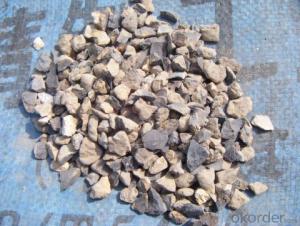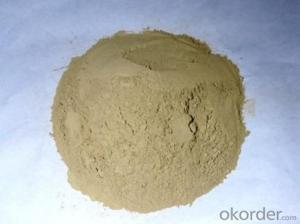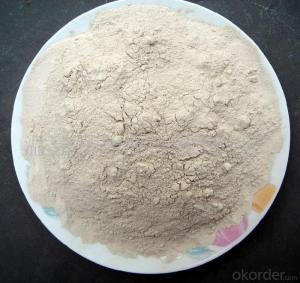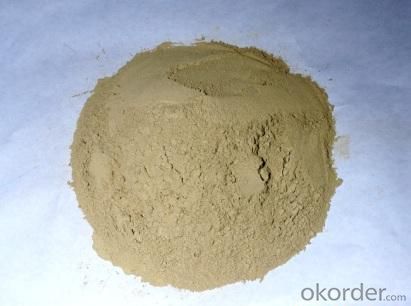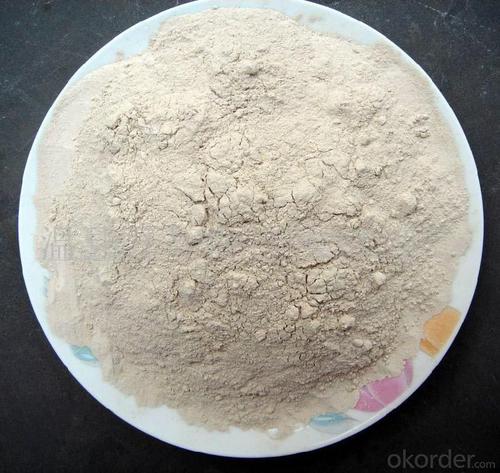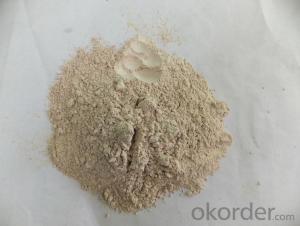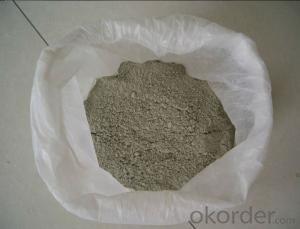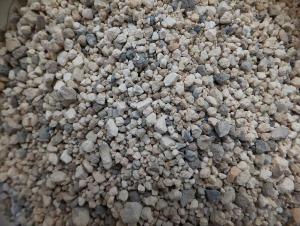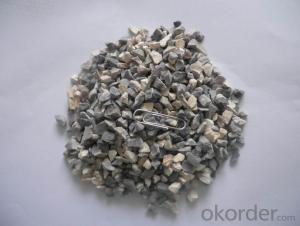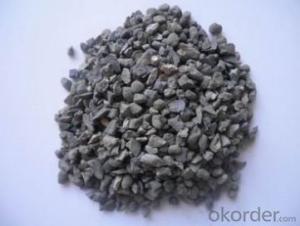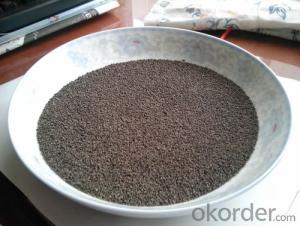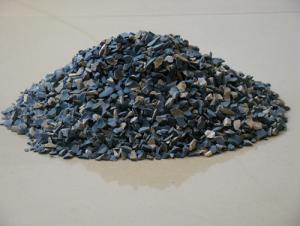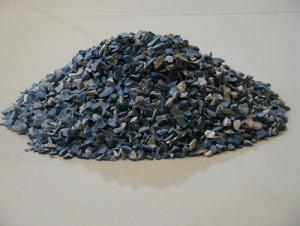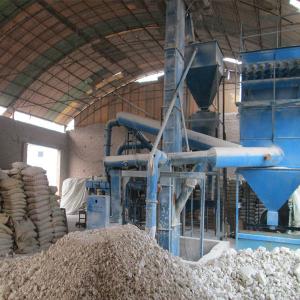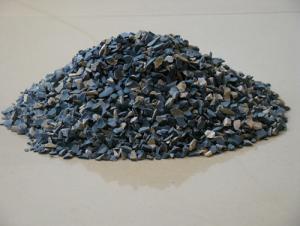Raw Materials for Refractory:Refractory Grade Calcined Bauxite 85% Grains
- Loading Port:
- Tianjin
- Payment Terms:
- TT OR LC
- Min Order Qty:
- 25 m.t.
- Supply Capability:
- 12000 m.t./month
OKorder Service Pledge
OKorder Financial Service
You Might Also Like
Refractory Grade Calcined Bauxite 85% Grains
Calcined Bauxite Introduction
Property | Specifications |
Name | aluminous soil ; bauxite |
Color | White, offwhite, auburnish yellow or light red (with Fe) |
Bulk Density | 2.55~3.6 g/cm3 |
Hardness | 1~3 |
Main usages | 1. Aluminium metallurgy 2.Refractory |
Calcined Bauxite Specifications

Calcined Bauxite Applications
1. Aluminium metallurgy
2. Precision casting / Investment casting:
bauxite grog fines can be made into mold for precision casting.
3. Refractory: high alumina bauxite’s refractoriness can reach 1780°C.
It is charactered by good chemical stability and mechanical performance. (Al2O3 ≥48% with low Fe2O3)
4. Aluminium silicate refractory fiber: The high alumina bauxite grog can melt under 2000°C-2200°C in the electric arc furnace.After a series of processing, it can become aluminium silicate refractory fiber,
which can be made into fiber blanket, plate,cloth.
5. Mixing magnesia and bauxite grog with binders to pour the molten steel ladle for better overall lining
performance.
Usage
(1) aluminium industry. Used in national defense, aerospace, automotive, electronics, chemical industry,
daily necessities, etc.
2 precision casting. Alumina clinker made after the mould precision casting processed into fine powder.
Used in military industry, aerospace, communications, instrumentation, machinery and medical equipment department.
(3) is used for refractory products. High bauxite clinker refractoriness is as high as 1780, chemical stability strong,
and good physical properties.
(4) aluminum silicate refractory fiber. With light weight, high temperature resistance, good thermal stability,
low thermal conductivity, heat capacity is small and the advantages of resistance to mechanical shock.
Used in iron and steel, nonferrous metallurgy, electronics, petroleum, chemical, aerospace, atomic energy,
defense and other industries.
Pictures:
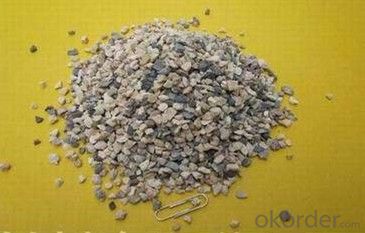
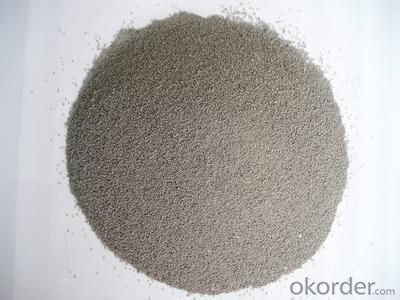
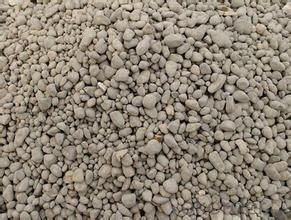
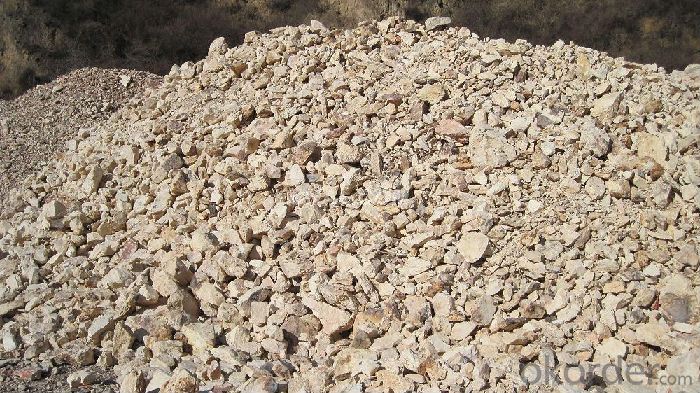
- Q: Can quantitative feeder be used in refractory plant? Thank you
- Well, can the Weifang Sanyou automation equipment production chain plate feeder is fully applicable to the measurement and control of boring high temperature, chain plate feeder with 16 4-5MM manganese plate.
- Q: What are included in wall fireproofing material?
- External wall thermal insulation materials are divided into A and B according to combustion level. Grade A is incombustible material, while grade B is combustible material. A few years ago, fires in CCTV building and Shenyang hotel resulted from grade B material. Currently grade A is usually used, and some are even cheaper than the grade B material. Grade A is roughly divided into insulation mortar, phenolic board, rock wool board, foam cement board, etc. Insulation mortar is quite good. It is easy and convenient to construct, has low cost, but the production is too simple and it is easy to fake. It is recommend to find a large manufacturer with complete formalities, such as provincial records of production, provincial records of use, city records, type test report at or above the provincial level, national fireproof report and design drawing collection of department of construction. Lack of any is unsafe. It is recommended to use mortar from Hebei Qizheng Haocheng New Building Material Co., Ltd. It is absolutely large manufacturer. MPC thermal mortar produced by it is recommend product of Department of Construction in Hebei Province!
- Q: how to use boiler fireclay
- Boiler refractory, diluted with water to touch the places where needed, can be used after high temperature baking.
- Q: What do we mean by saying that a ladle cover knots, elbow knots, blowpipe knots in refractory materials? What is the “knot”?
- Blowpipe is also the construction of unshaped refractory materials. Refractory material for ladle cover is light weight heat insulation refractory material. What you said that the construction of bend out refractory materials in some steel mills called "knot".
- Q: How many refractory materials does the annual output of 1 million tons of coke oven require?
- Refractory material is an important material used in iron and steel industry, it is mainly used in steel-making furnace, furnace lining, loading and transportation of metal and slag ladle lining, the furnace lining procedure of billet heating, heat conduction and lining of blast furnace and the flue. So, to put it simply, we can think of it as a structural material, which can withstand a temperature of 260-1760 degrees centigrade.
- Q: I would like to ask a friend that how much is the fire endurance of level A fireproofing glass?
- the fire endurance of fire window is: class A window is not less than 1.2 hours, class B window is not less than 0.9 hours, Class C window is not less than 0.6 hour. technical requirements: 1, materials and accessories (1) the window frame is made by a certain strength of steel frame or wooden frame which is sufficient to safeguard the integrity and stability. (2) steel frame and mound layer can select galvanized?steel?sheet or stainless steel plate. Its selection standards should be in line with the provisions of Article 5.1. in GB12955 "Steel Fireproof Door General Technical Condition" (3) the selection standards of wood frame and mound layer should be consistent with the provisions of Article 5.1.1. in GB14101 "General Technical Conditions of Wooden Fireproof Door" (4 ) the inner filling material of steel and wood frame should be non-combustible material. (5) fireproofing glass can choose the qualified products in fire resistance test and not affecting the fire windows. light transmittance of glass is not less than 75% of identical layers of ordinary plate glass. ( 6) a sealing material between the frame and the fireproofing glass should use the nonflammable material, it can play the role of fireproofing and smoke insulation in the fire disaster. I hope I can help you
- Q: For refractory, why is it necessary to store the first mixing materials for some time under proper moisture and temperature?
- It is mainly to remove gas form chemical reactions in the pug, give full play to plasticity and binding properties of combined, and store unburned?brick whose cememting agent is phosphoric?acid or aluminium?phosphate for some time under proper moisture and temperature. For example, to avoid the formed bricks in the initial stage of drying and firing form cracking due to hydration of calcium oxide. Mixing materials is to store the first mixing materials for some time under proper moisture and temperature in order to improve the evenness and moldability of pud, such as making the distribution of combined clay and water more even. The length of storing chiefly depends on the process requirements and the characteristics of blanks. For the producing pug of high temperature kiln furnitures, the storing time is longer. The function of storing mxing materials varies with different natures of blanks. For honeycomb ceramics, it is to fully digest calcium oxide in blanks. For storing magnesia brick blanks containing much calcium oxide, it should be stored for some time in proper humidity and temperature.
- Q: Fire insulation and fireproof insulation board materials What is the difference in performance?
- Fireproof materials and insulation materials, refractories not the same thing, but some insulation materials are fire resistant and refractory. Fireproof material is a synthetic material characteristics of fire resistance or the material itself is a high temperature resistant, flame-retardant. Fireproof materials are mostly used for construction, playing an important role in fireproof today in various forms.
- Q: What are grades of refractory materials?
- Refractories have lots of varieties which all have different purposes. It is necessary to classify refractories scientifically in order to scientifically study, choose and manage them. Classification methods of refractories include chemical properties classification, chemical composition of mineral classification, manufacturing technique classification, morphology of the material classification. 1 divided according to the level of refractoriness: ordinary refractory materials: 1580 ℃ ~ 1770 ℃, advanced refractories: 1770 ℃ ~ 2000 ℃ and super refractories: above 2000 ℃ 2, divided in accordance with shapes and sizes : Standard ones: 230mm × 113mm × 65mm, no more than four ruler.
- Q: Does anyone knows which company produces the better refractory materials?
- 1, Xinjiang Seekon new material limited liability company: Xishan Street No. 382,Saybagh District 2, Refractory Material Co., Ltd. In Xuyan, Benxi: Near the Sihu Road, Benxi City 3,Benxi Beitai new refractory material factory sales office address: Benxi city Sihu District Liu Toro No. 16
Send your message to us
Raw Materials for Refractory:Refractory Grade Calcined Bauxite 85% Grains
- Loading Port:
- Tianjin
- Payment Terms:
- TT OR LC
- Min Order Qty:
- 25 m.t.
- Supply Capability:
- 12000 m.t./month
OKorder Service Pledge
OKorder Financial Service
Similar products
Hot products
Hot Searches
Related keywords
